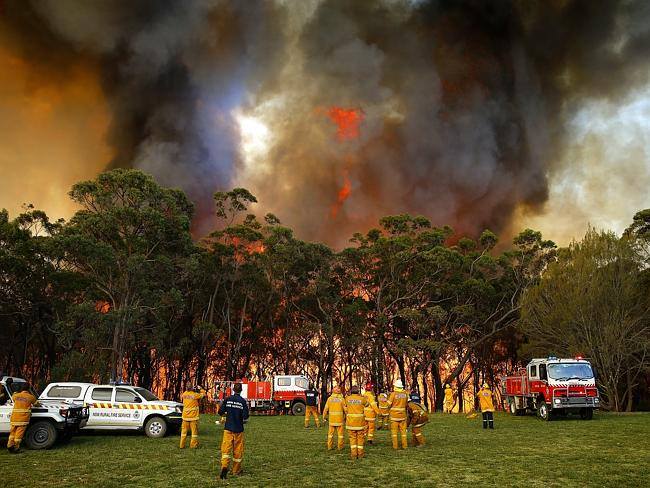What conditions should you expect if you stay and defend your home?
People who have stayed to defend their home during a bushfire describe the experience as “terrifying, hot and noisy”, “Sounds like a freight train” – It’s hard to imagine even with a video clip, just how you will feel in the moment.
Recent fires in Australia and overseas have provided a wealth of media and YouTube clips that show the very real risk and fear of people who have been caught in the wrong place at the wrong time. This hopefully can serve as a warning not to take Catastrophic or Extreme fire conditions lightly. These kinds of conditions even put well trained and resourced fire crews to the test and are not the time to play hero. You will be safest well away from the fire affected area in these conditions.
Work begins before the fire front passes through your area and ends hours after. It sounds like a marathon, because it is!
This is not meant to scare you off but it’s vital for your safety that you are physically and mentally prepared for very difficult conditions.
Everyone has their own limits, be safe by knowing yours.
Defending against an ember attack
We’ve mentioned before that 90% of houses that are lost in a bush fire are not as a result of the actual fire front. Falling embers can travel many kilometres in hot, dry winds. These embers can blow into nooks and crannys, open windows or broken glass in your home then sit and smoulder without visible smoke or other signs that a fire has started. Many loses burned down hours later due to small points of ignition that had gone unnoticed.
Embers present the greatest risk but also the best chance for you to actively defend your home.
Legend has it that in the Upper Blue Mountains an elderly lady once successfully defended her home from ember attack with a wet cotton mop. She spent hours braving the smoke and embers to confidently splosh out spot fires. The mop preserved her small and precious water supply. Genius!
She needed to check ceiling cavities, roof gutters and valleys, under decks, outdoor furniture, the garden shed, wood piles, etc. on a continual patrol for a number of hours after the fire front had passed.
Do you have the mettle? To top off the hard work, it will be hot, smokey and you will be tired after all the anticipation and adrenaline.
Always consider your safety. Make sure you are prepared, well equipped and informed on what you need to do.
“But a fire truck will come?” There will never be one truck for every house. Most resources are likely to be drawn to the fire line to contain and control a bushfire. Streets away, you could be standing vigilant in your safety gear ready to douse that tiny ember before it takes hold and spreads.
By planning and keeping a clear head you can:
- look out for your safety
- remember your triggers and actions
- remember your plan B if the situation changes.
It is so very important to plan thoroughly and to make sure you are as well equipped as you can be. Use your Bush fire Survival Plan to build your list of essential bushfire fighting tools and check out our other article on dressing for success and safety.
“It’s too late to evacuate, seek shelter…”
This scenario should sound foreboding, but again, the better you plan and prepare the better are your chances of getting through safely. You may hear something like this from media briefings when a bushfire is out of control or has broken containment. Where are some possible places you could seek safety? Solid, well prepared houses and buildings near you, large open clearings? Make note of them on a map.
 We hope this has helped inform your understanding of what it might be like, we’ll revisit this throughout this series to give you time to make a decision you feel confident and safe with.
We hope this has helped inform your understanding of what it might be like, we’ll revisit this throughout this series to give you time to make a decision you feel confident and safe with.
